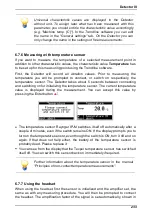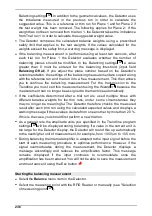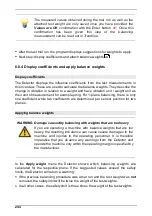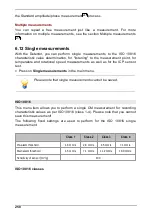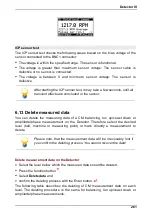
247
Detector III
6.9 Run up/coast down (Determining the resonance range)
Background
Balancing a machine with the aid of the Detector must not be performed in the
resonance range as the vibration amplitude increases severely and the phase
changes considerably when the machine is operated at or near resonant
frequencies. Even the smallest weight changes may lead to severe amplitude
changes so that, if the worst comes to the worst, a balancing attempt may even
destroy the machine.
In order to avoid such damage, you can determine the resonant ranges of a
machine using the Detector and the Trendline software. To do so, the machine is
started up and shut down in a controlled manner (run up/coast down test) while
the Detector continuously measures the amplitude and phase of the vibration and
rotational speed at the measuring point. The data measured in this test are
displayed in an amplitude/phase diagram.
For the measurement, you can specify a rotational speed range to automatically
start and stop the measurement. Alternatively, you can start and stop measuring
manually.
WARNING
Damage
due
to
operation
outside
manufacturer's
specifications
The machine must b e operated within rotational speed limits
permitted b y the manufacturer for normal operation while
determining resonant ranges. Therefore, always ob serve these
rotational speed limits when performing the run up/coast down
test. Determination of resonant range is always performed at the
system operator's own risk!
Conditions
Run up/coast down must be set up in the configuration
.
Other notes
The Detector performs the measurement with only one vibration sensor. If you
want to determine the resonant ranges at multiple sensor positions, you must
repeat the entire run up/coast down procedure there.
Determining resonant range of a machine
Proceed as follows to carry out the measurement with a defined rotational speed
range:
Select the
Run up/coast down
menu item in the Detector.
58

